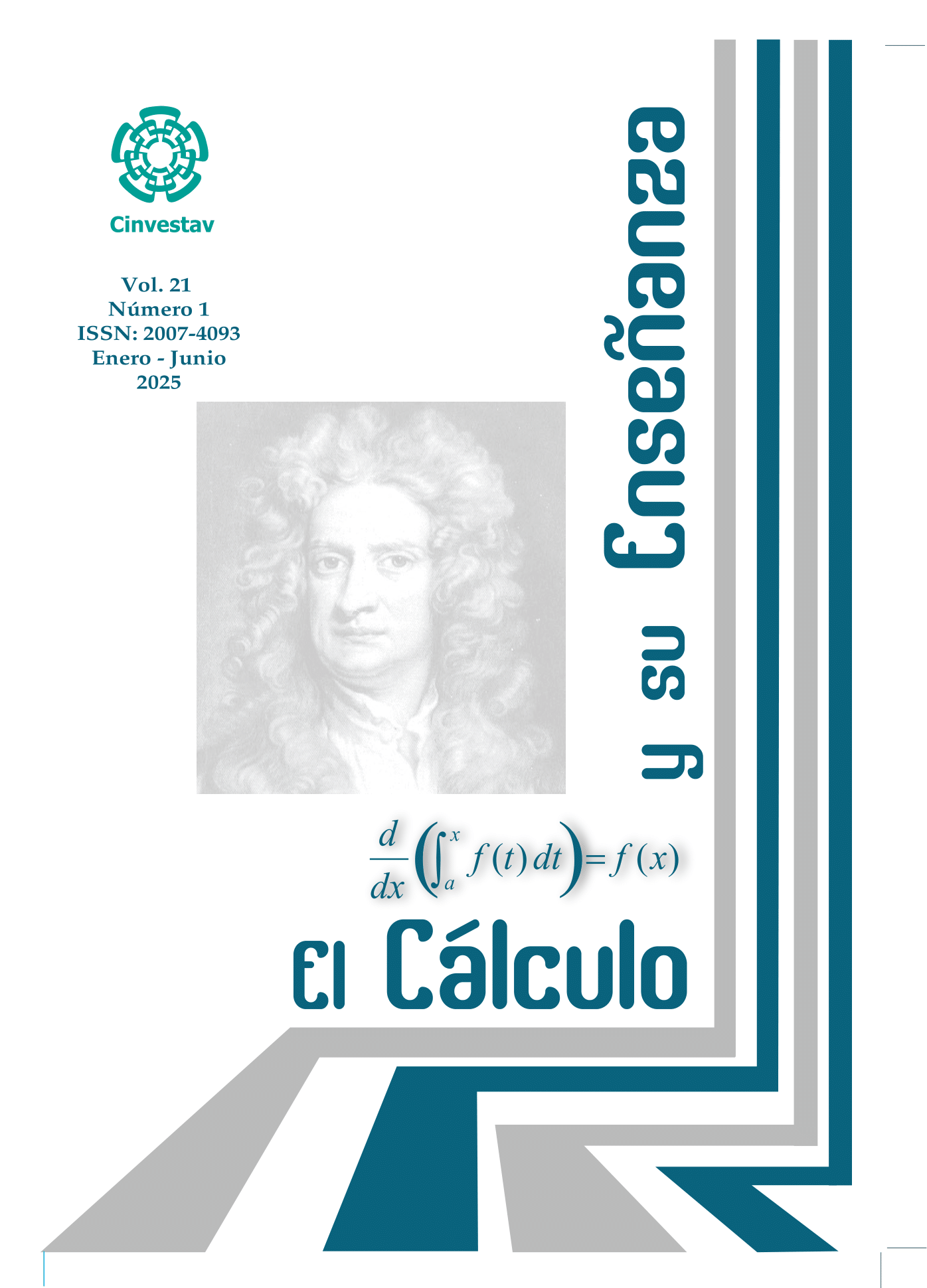Diseño de actividades para la comprensión del diferencial mediante visualizaciones dinámicas
Contenido principal del artículo
Resumen
Este artículo presenta una propuesta didáctica para introducir el concepto de diferencial en funciones reales de una variable, centrándose en su significado geométrico y su visualización mediante objetos dinámicos diseñados en el software GeoGebra. A partir del estudio de las funciones lineales como modelo ideal, se introduce paulatinamente la idea de aproximación local, junto con la exploración del error de aproximación y el cociente del error relativo en el caso de funciones no lineales, con el propósito de formalizar la condición de diferenciabilidad para este tipo de funciones. A través de la integración de diversas formas de representación, esta propuesta busca propiciar una comprensión sólida del concepto de diferencial como un modelo lineal de carácter local, haciendo énfasis tanto en su visualización como en los fundamentos analíticos que lo sustentan.
Detalles del artículo

Esta obra está bajo una licencia internacional Creative Commons Atribución-NoComercial 4.0.
Citas
Apostol, T. M. (1972). Calculus, Volume I: One-variable calculus, with an introduction to linear algebra (2nd ed.). John Wiley y Sons
Arcavi, A. (2003). The role of visual representations in the learning of mathematics. Educational Studies in Mathematics, 52(3), 215–241
Borba, M. C., y Villarreal, M. E. (2005). Humans-with-Media and the Reorganization of Mathematical Thinking: Information and Communication Technologies, Modeling, Visualization and Experimentation. Springer.
Borji, V., Martínez-Planell, R. y Trigueros, M. (2023). University students’ understanding of directional derivative: An APOS analysis. International Journal of Research in Undergraduate Mathematics Education
Courant, R. y Fritz, J. (1974). Introducción al cálculo y al análisis matemático. Vol. I (2.ª ed., trad. E. García de la Vega). Limusa
Cullen, C. J., Hertel, J. T. y Nickels, M. (2020). The roles of Technology in Mathematics Education. The Educational Forum, 84(2), 166–178
https://recacym.org/index.php/recacym/submission/wizard/2?submissionId=231#step-2
Dikovic, L. (2009). Applications of GeoGebra into teaching some topics of mathematics at the college level. Obnovljeni Zivot, 64(1), 73–78.
Duval, R. (2006). A cognitive analysis of problems of comprehension in a learning of mathematics. Educational Studies in Mathematics, 61(1–2), 103–131. https://doi.org/10.1007/s10649-006-0400-z
Finesilver, C. (2022). Beyond categories: Dynamic qualitative analysis of visuospatial representation in arithmetic. Educational Studies in Mathematics, 110(2), 271–290.
Hähkiöniemi, M. (2006). The role of representations in learning the derivative (No. 104). University of Jyväskylä.
Hohenwarter, M., y Preiner, J. (2007). Dynamic mathematics with GeoGebra. Journal of Online Mathematics and Its Applications, 7, Article ID 1448.
Larson, R., Edwards, B., Young, H., y Freedman, R. (2011). Cálculo. De 1 y de 2 variables. McGraw Hill.
Martínez-Planell, R., Gaisman, M. T., y McGee, D. (2015). Student understanding of directional derivatives of functions of two variables. Proceedings of the . . . PME Conference.
Martínez-Planell, R., Trigueros, M., y McGee, D. (2015). Student understanding of directional derivatives of functions of two variables. En T. G. Bartell, K. N. Bieda, R. T. Putnam, K. Bradfield y H. Domínguez (Eds.), Proceedings of the 37th Annual Meeting of the North American Chapter of the International Group for the Psychology of Mathematics Education, (pp. 355–362). Michigan State University.
Piskunov, N. (1984). Differential and integral calculus (Vol. 1). MIR Publishers
Rojas, L. C., Mejía, H. R., y Esteban, P. V. (2019). Conceptualización de la derivada direccional a partir de la pendiente de una recta en el espacio. El cálculo y su enseñanza, 12, 13-26.
Rojas, L. C. (2019). Enseñanza y aprendizaje de la derivada direccional a través de la interacción con objetos dinámicos [Tesis doctoral]. Centro de Investigaciones y Estudios Avanzados del Instituto Politécnico Nacional (CINVESTAV).
Schoenherr, J., y Schukajlow, S. (2023). Characterizing external visualization in mathematics education research: A scoping review. ZDM – Mathematics Education, 56(1), 73–85.
Spivak, M. (2006). Calculus (4th ed.). Cambridge University Press.
Stewart, J. (2016). Cálculo de una variable (7.ª ed.). Cengage Learning.
Tall, D. (2004). Building theories: The three worlds of mathematics. For the Learning of Mathematics, 24(1), 29–32.
Tall, D. (2013). How humans learn to think mathematically: Exploring the three worlds of mathematics. Cambridge University Press.
Thompson, P. W. (1994). Students, functions, and the undergraduate curriculum. In E. Dubinsky, A. H. Schoenfeld y J. Kaput (Eds.), Research in Collegiate Mathematics Education I (pp. 21–44). AMS/MAA.
Trigueros, M., Badillo, E., Sánchez-Matamoros, G., y Hernández-Rebollar, L. A. (2024). Contributions to the characterization of the Schema using APOS theory: Graphing with derivative. ZDM, 56(6), 1093–1108.
Trouche, L., Rocha, K., Gueudet, G., y Pepin, B. (2020). Transition to digital resources as a critical process in teachers’ trajectories: the case of Anna’s documentation work. ZDM, 52(7), 1243–1257.
Zandieh, M. (2000). A theoretical framework for analyzing student understanding of the derivative. CBMS Issues in Mathematics Education, 8, 103–127.

